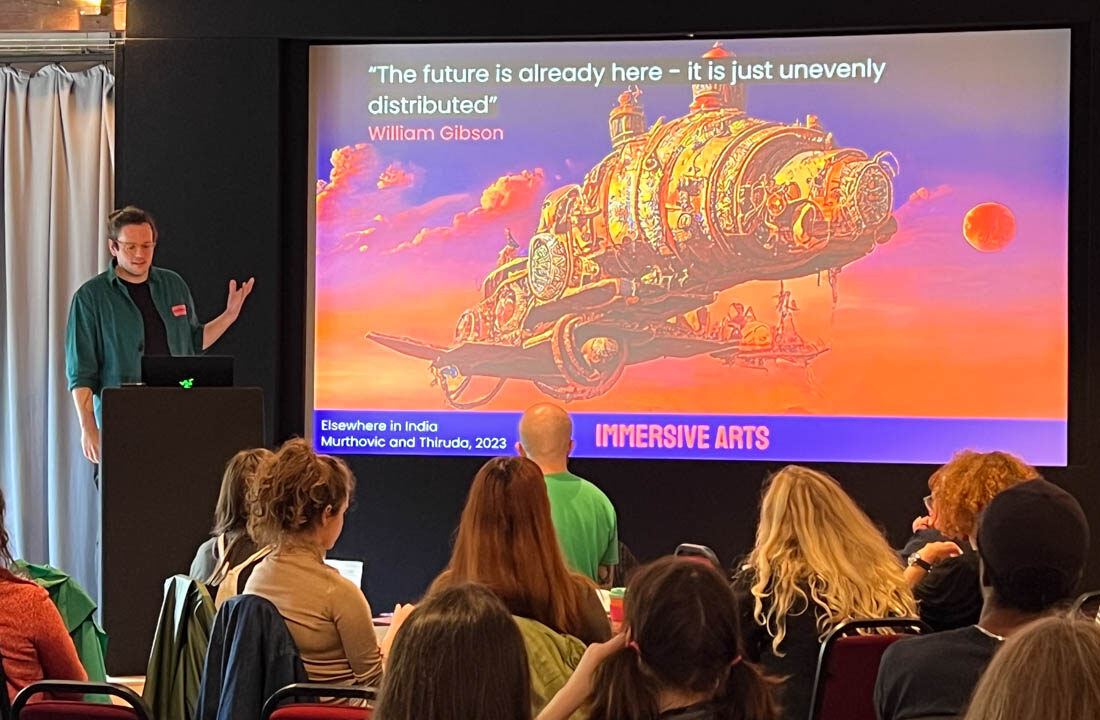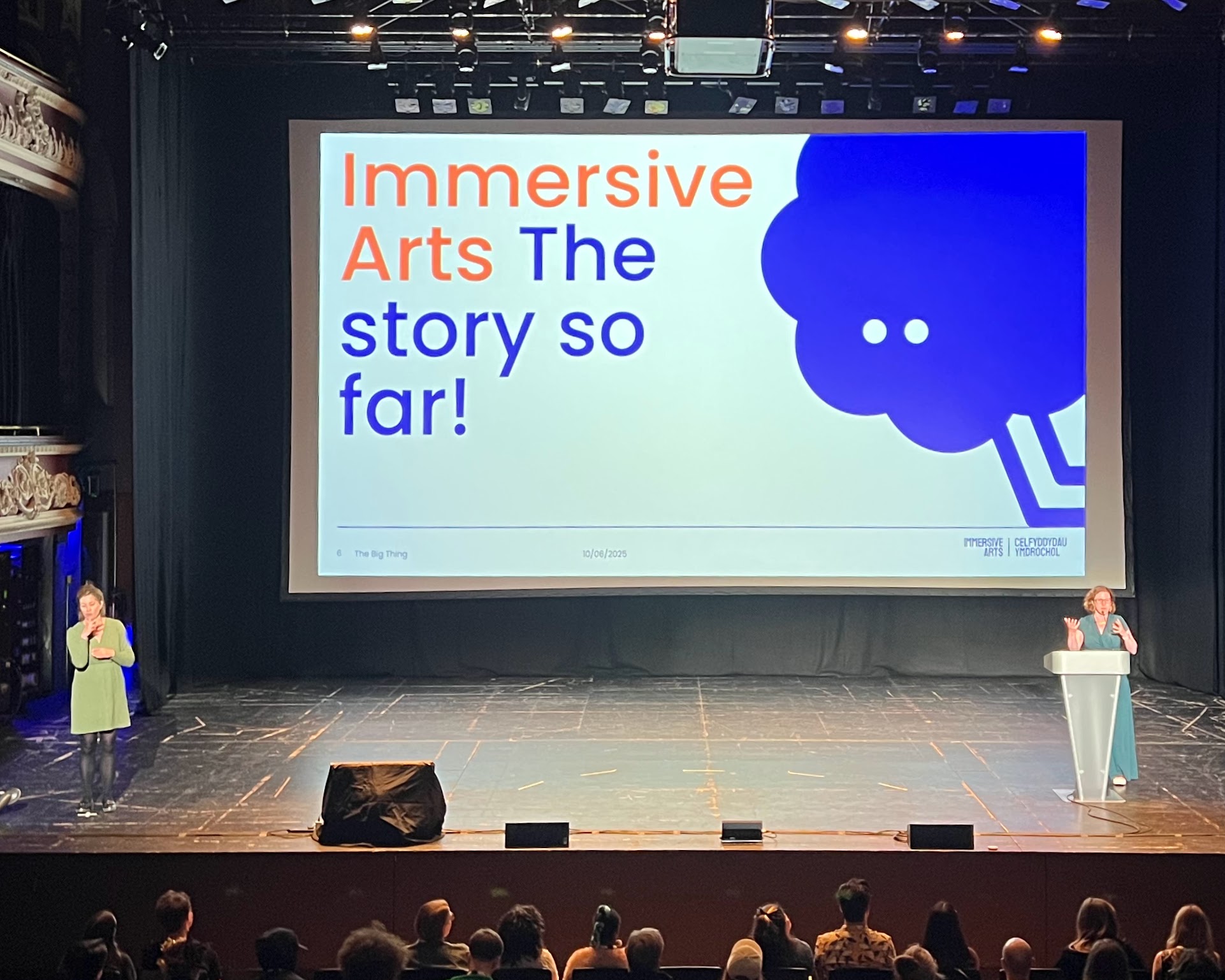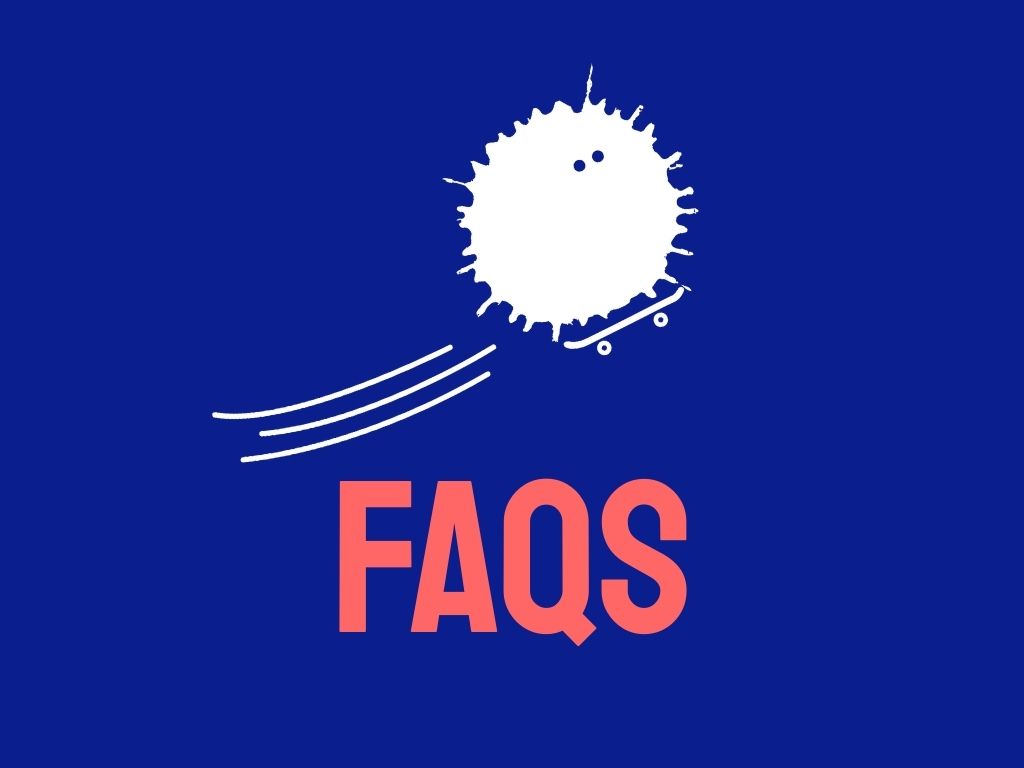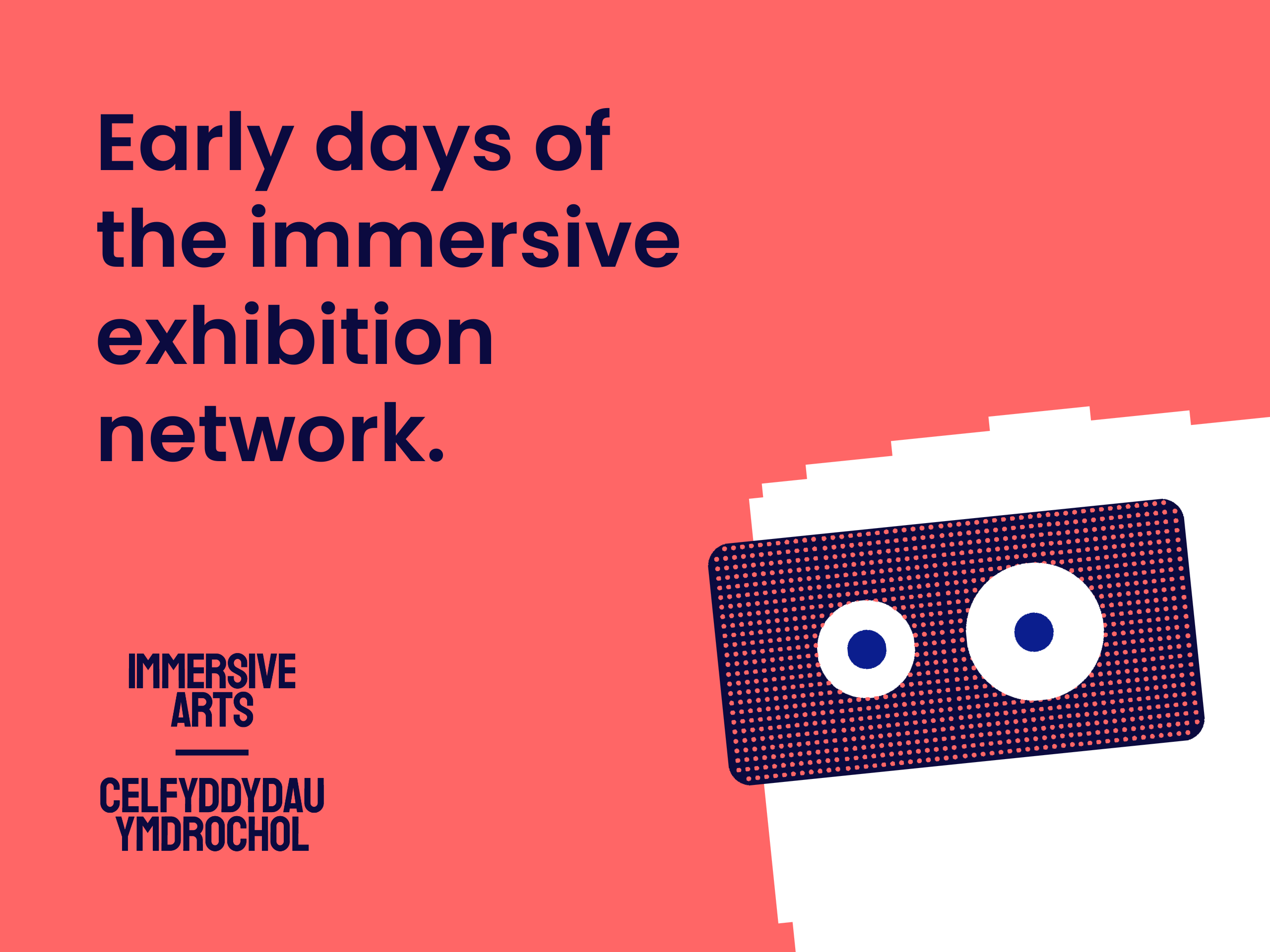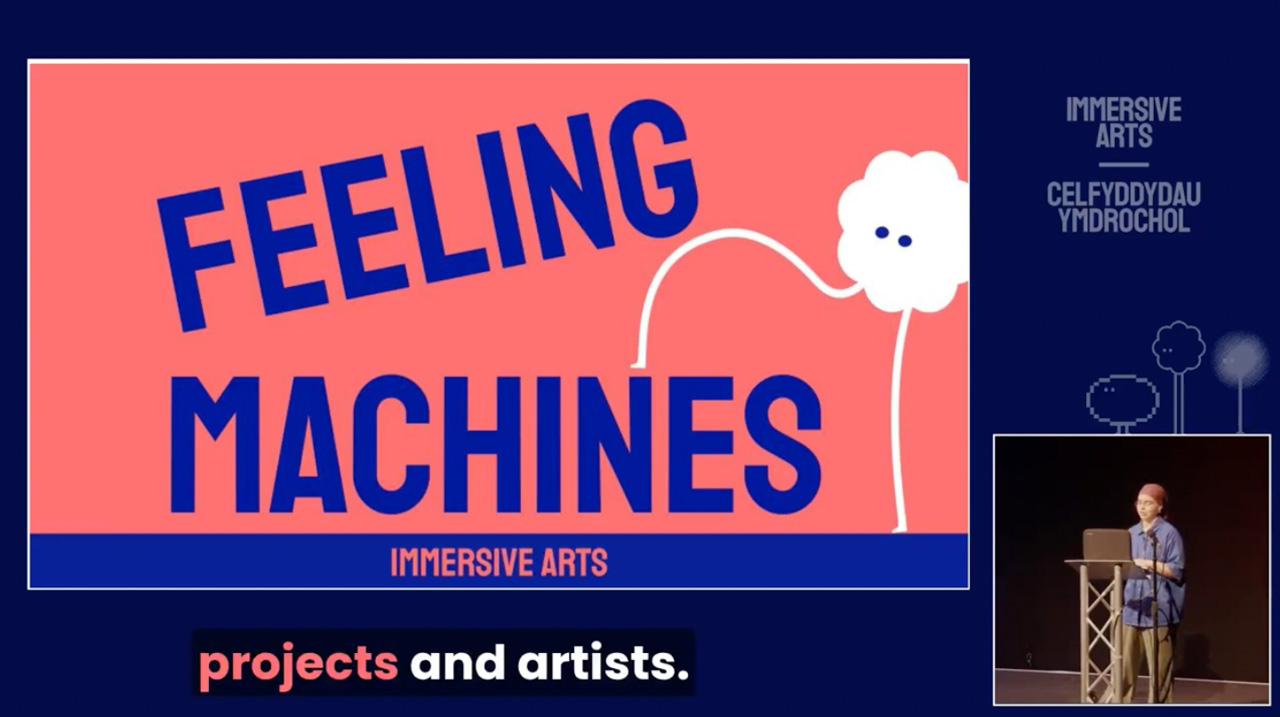Funding
Between 2024 and 2027, more than 200 artists across Scotland, Wales, Northern Ireland and England are being supported to explore, experiment and expand their creative practice through immersive technologies.
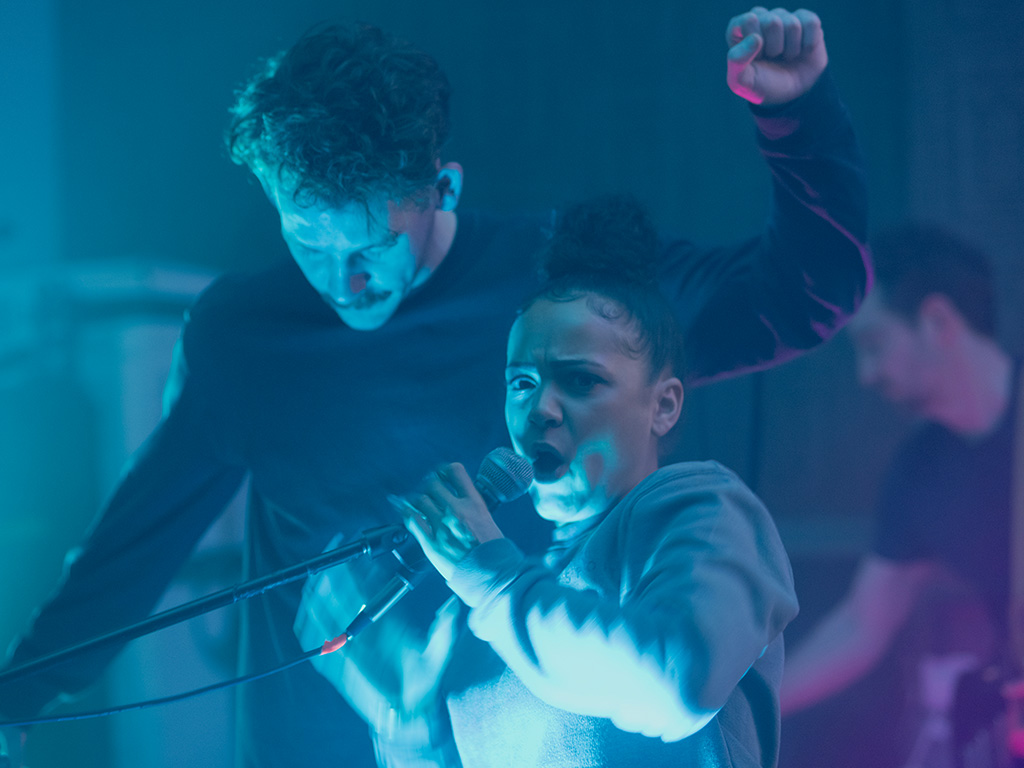
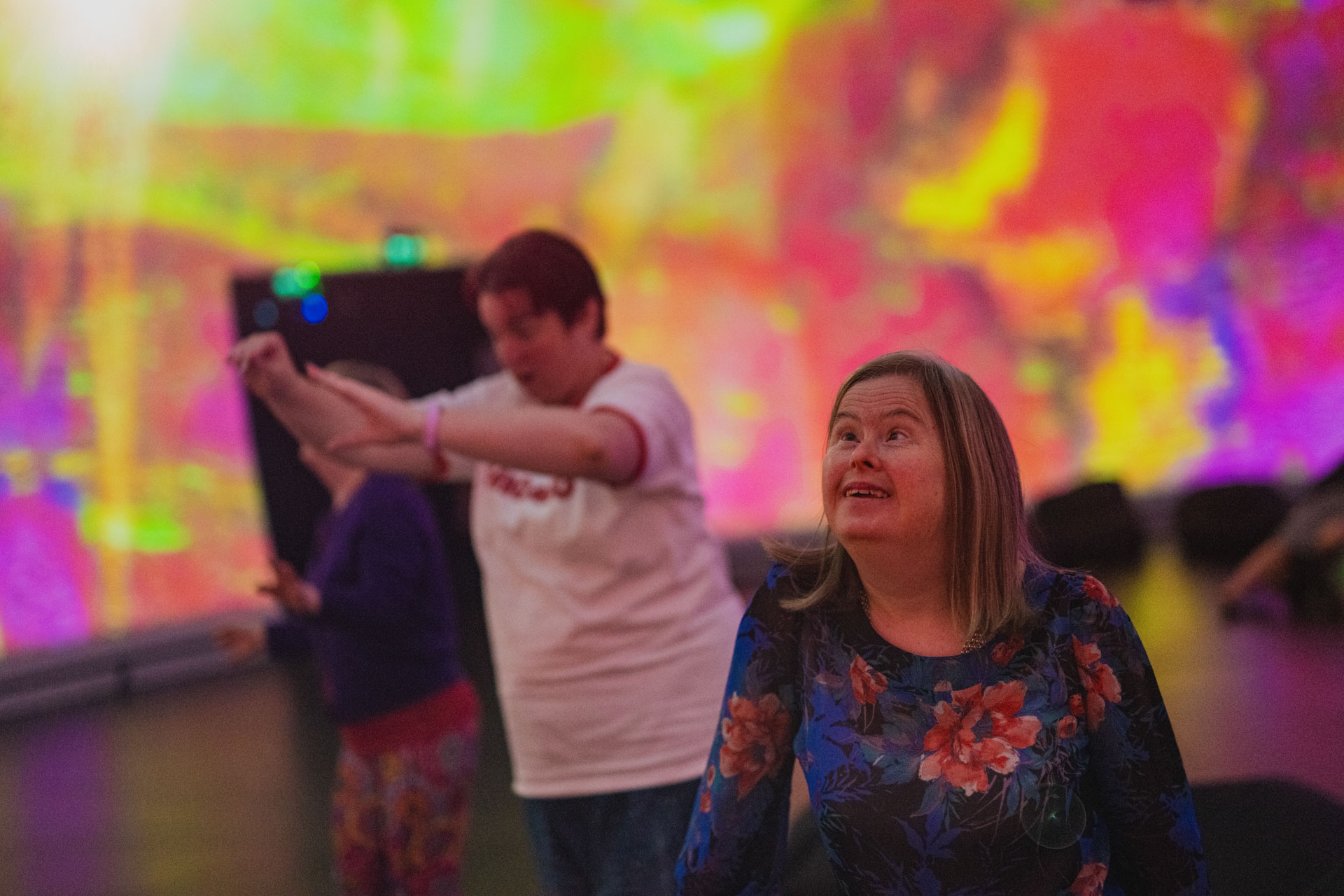
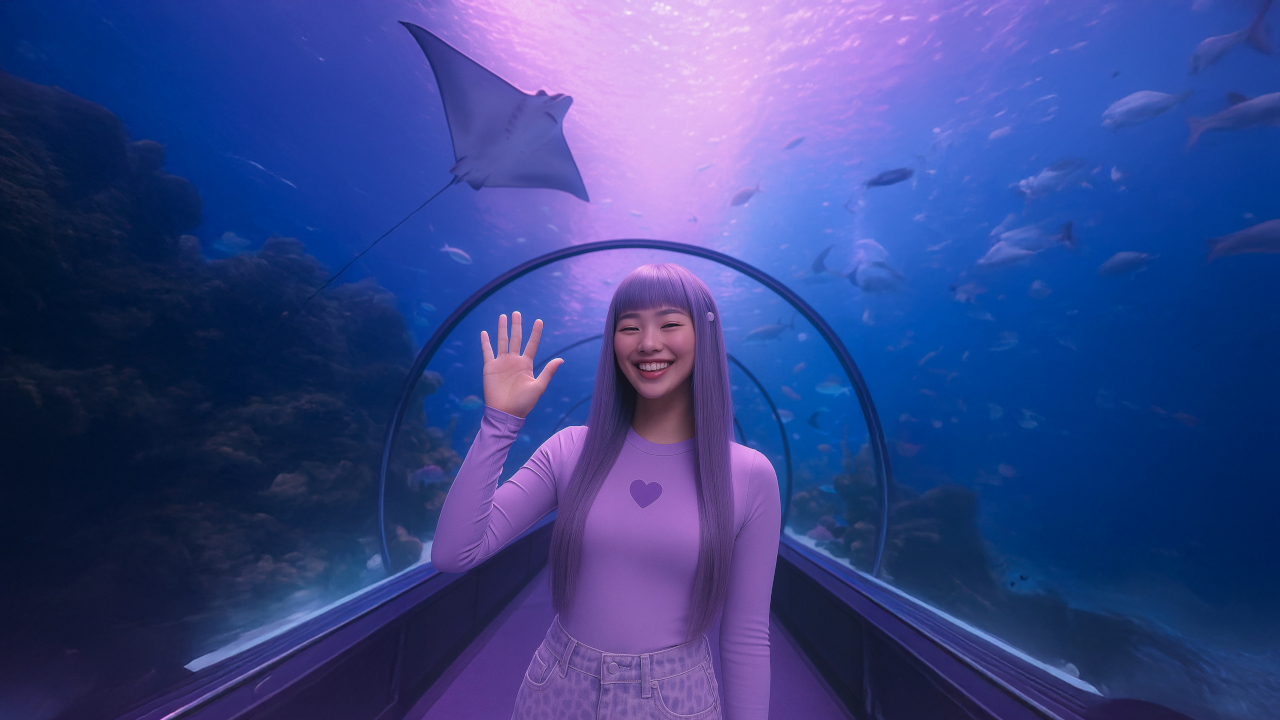

Immersive Arts is a funding and support programme for UK-based artists, the second and final funding round closed on Monday 29 September 2025.
The programme is designed to help those who apply develop their art by using immersive technologies. The programme invited artists at all levels of experience to explore, experiment or expand how they work with this exciting field of practice.
Artists don’t need tech-savvy to take part — all that is needed is a curious mind and creative practice. The aim has been to break down barriers and make what can be an exclusive field of practice much more accessible to all.
Each strand is designed to support artists at different stages in their creative development with immersive technologies.
The Explore (£5,000), Experiment (£20,000), and Expand (£50,000) funds support artists at different stages of developing immersive arts projects.
Explore helps artists investigate early-stage immersive technologies, build foundational skills, experience immersive works, and connect with collaborators.
Experiment enables artists to create and test experimental works with small audiences, refine their use of immersive technology, and address access, diversity, and inclusion.
Expand supports the advancement or completion of well-developed projects, enhancing audience engagement, reach, and inclusivity.
Eligibility
Artists are eligible to apply for an Immersive Arts grant if they:
- An individual artist, creative practitioner, or technologist.
- An arts organisation, small group, or collective (10 or fewer people for Explore/Experiment; up to 50 for Expand).
- Based in the UK, aged 18 or over, with a UK bank account.
Larger organisations can be named as a partner on applications, but this is not expected or required.
Round 1 Awards
In the first round of funding, we received 2,517 applications from artists across England, Wales, Scotland and Northern Ireland — far more than expected. This response shows the strong appetite among artists to make and share new immersive work.
A total of £1,180,000 has been awarded to 83 projects, distributed across the three strands as follows:
- 50 × £5,000 – Explore grants
- 24 × £20,000 – Experiment grants
- 9 × £50,000 – Expand grants
The funded projects cover a wide range of art forms, including dance, theatre, visual arts, music, games, animation, film, sculpture and live art. Artists are working with technologies such as virtual, augmented and mixed reality, spatial audio, interactive projections, machine vision, responsive environments, artificial intelligence, haptics and connected textiles.

Round 2 Awards
The second and final round of Immersive Arts funding closed on Monday 29 September 2025. We’re currently reviewing applications, and the selected artists will be announced in 2026.
Funded Projects
Over 200 artists and creative teams will receive support through Immersive Arts between 2024 and 2027. You can look at all of our first round funded projects below.

Resources
Access information about the programme, guidance, downloads, and toolkits through the Resources section below.

